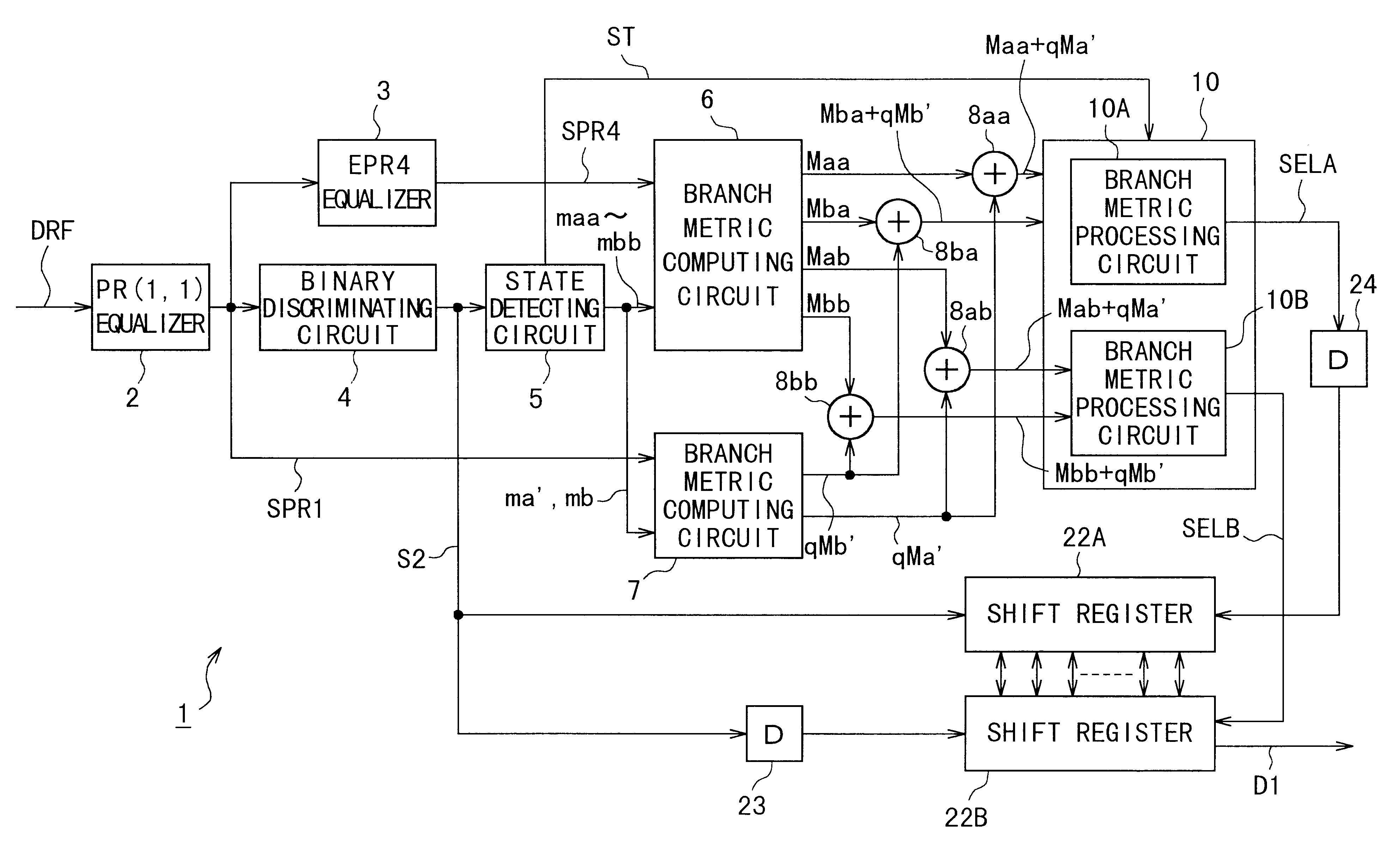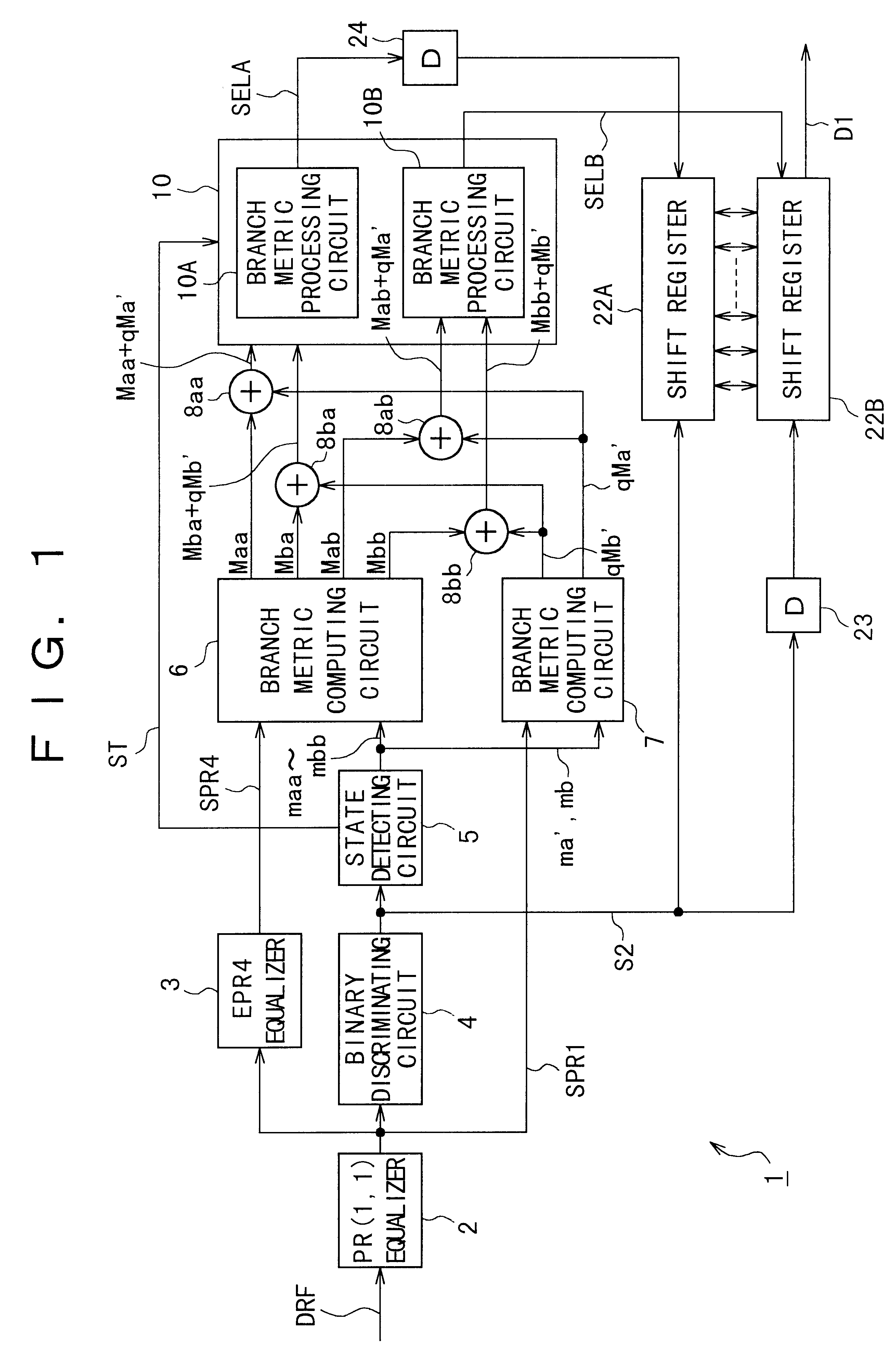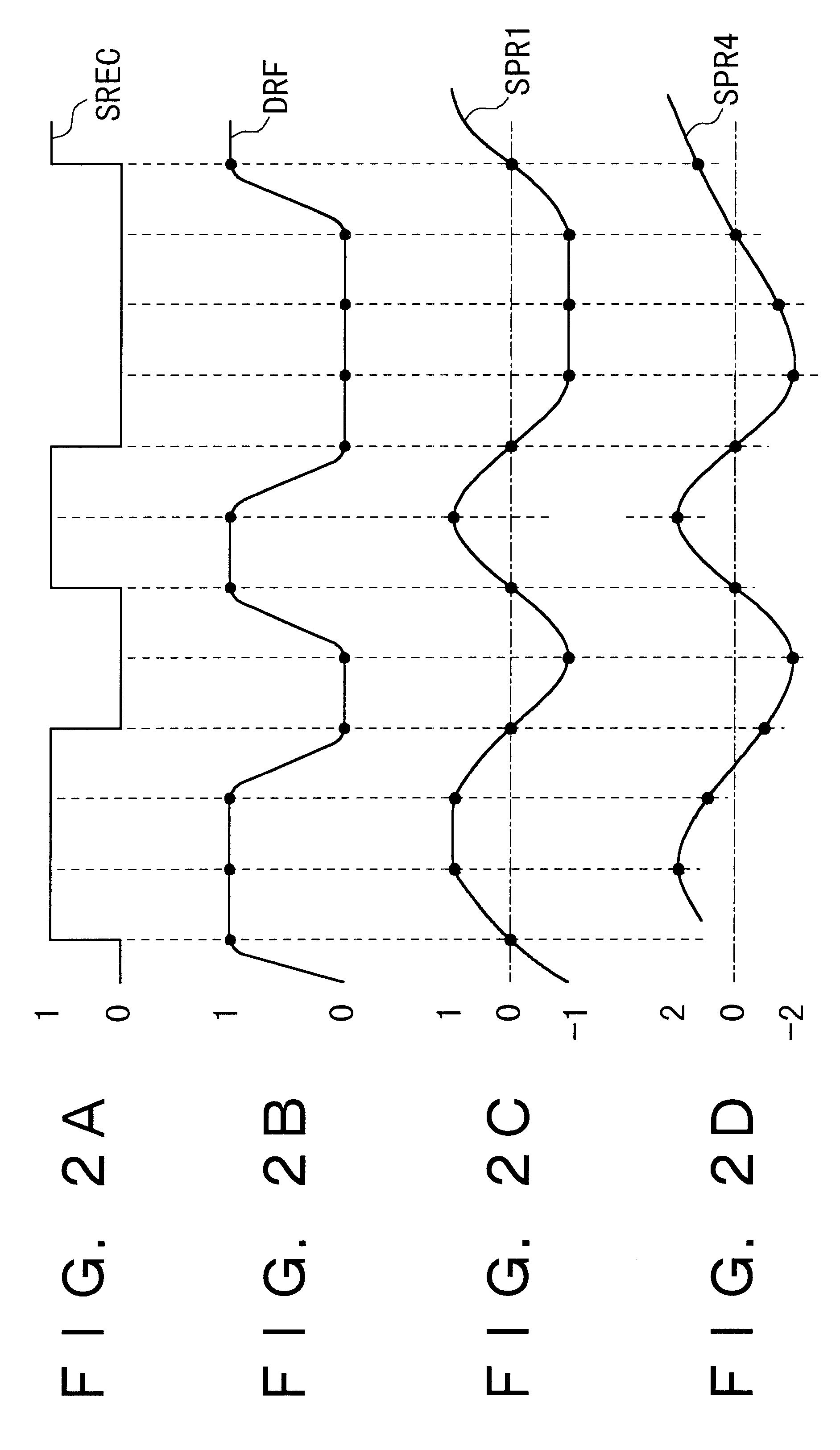Digital signal reproducing apparatus
a digital signal and reproducing technology, applied in the field of digital signal reproducing apparatus, can solve the problems of difficult to ensure sufficient signal discrimination accuracy, deterioration etc., and achieve the effect of effectively preventing avoiding lowering discriminatory levels, and effectively averting noise-induced degradation of signal discrimination accuracy
- Summary
- Abstract
- Description
- Claims
- Application Information
AI Technical Summary
Benefits of technology
Problems solved by technology
Method used
Image
Examples
second embodiment
(2) Second Embodiment
FIG. 9 is a block diagram showing a Viterbi decoder of the second embodiment of this invention. In describing this Viterbi decoder 30, the component parts with their functionally identical or equivalent counterparts shown in FIG. 1 are designated by like reference numerals, and repetitive descriptions are omitted.
In the Viterbi decoder 30, a delay circuit 31 receives a PR1 equalized signal SPR1 and delays it for a predetermined period of time before outputting it. A weighting circuit (x q) 32 weights the output data of the delay circuit 31 using a predetermined weighting factor "q" and outputs the weighted result. An adder 33 adds up the output data of the weighting circuit 32 in timed relation with an EPR4 equalized signal SPR4. In the second embodiment, the operation below is carried out and the PR1 equalized signal SPR1 and EPR4 equalized signal SPR4 are added up in a weighted manner with being in phase with each other, thus generating an equalized signal SXP...
third embodiment
(3) Third Embodiment
FIG. 10 is a block diagram showing a Viterbi decoder of the third embodiment of this invention. In this embodiment, a Viterbi decoder 40 adds up in a weighted manner an equalized signal SPR1 having integrating system characteristics and an equalized signal SPR4 having differential system characteristics, thereby generating an equalized signal SXPR4.
The equalized signal SXPR4 thus generated effects state transitions shown in the table of FIG. 11 and in the trellis diagram of FIG. 12. With this embodiment, branch metrics "BM0" through "MB8" are computed every states involved, and a metric is computed every state transitions.
A branch metric processing circuit 42 receives the equalized signal SXPR4 and carries out the operations below every sampled values of the equalized signal SPR4. This computes branch metrics "BM0[k]" through "BM8[k]" on each of the amplitude reference values. The computed metrics are outputted. The operations involved are as follows:
BM0[k]=(expr...
fourth embodiment
(4) Fourth Embodiment
In the discriminated results decoded as described above, amplitude fluctuations in the digital reproduced signal DRF cause discrimination accuracy to deteriorate. Therefore in this embodiment, the EPR4 equalized signal SPR4 and the PR1 equalized signal SPR1 are added up in the constitution as shown in FIG. 1 in timed relation such that equalizing reference values are not affected by amplitude fluctuations.
In this embodiment, the state detecting circuit 5 having the constitution as shown in FIG. 1 changes the weighting factor "q" in accordance with the amplitude reference value. Specifically, the weighting factor "q" is set to a significant value when the amplitude reference value becomes 0; when the amplitude reference value is other than 0, the weighting factor "q" is set to 0.
Thus, in this embodiment, the metrics are computed by using the following expressions:
LA(n+1)=min{LA(n)+Maa(i)+Maa(i+1)+Maa(i+2)+q*Ma'(i), LB(n)+Mba(i)+Mba(i+1)+Mba(i+2)+q*Mb'(i+1)} (12-1...
PUM
| Property | Measurement | Unit |
|---|---|---|
| density | aaaaa | aaaaa |
| length | aaaaa | aaaaa |
| hysteresis | aaaaa | aaaaa |
Abstract
Description
Claims
Application Information
 Login to View More
Login to View More - R&D
- Intellectual Property
- Life Sciences
- Materials
- Tech Scout
- Unparalleled Data Quality
- Higher Quality Content
- 60% Fewer Hallucinations
Browse by: Latest US Patents, China's latest patents, Technical Efficacy Thesaurus, Application Domain, Technology Topic, Popular Technical Reports.
© 2025 PatSnap. All rights reserved.Legal|Privacy policy|Modern Slavery Act Transparency Statement|Sitemap|About US| Contact US: help@patsnap.com



